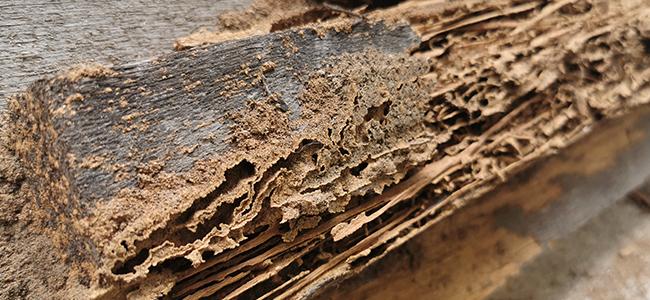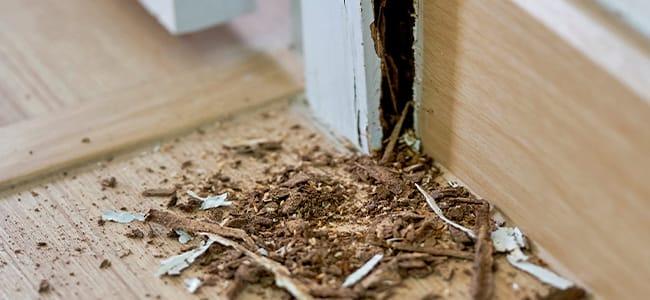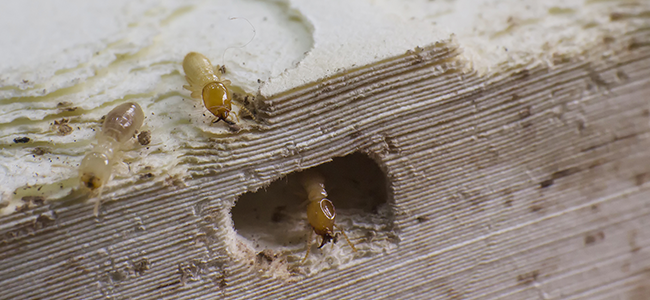
What Every Radford Resident Should Know About Termite Control
01/17/2022
Find out what you need to know about termite control in Radford. ...
READ MORE >

Winters in the Maryland and D.C. areas are milder than some areas and harsher than others. One thing is certain though; despite how little or much snow we get in any given year, the temperature drops low enough to send most pests out of our lives for an extended period. This leads to an important question: Are termites a problem during the winter?
Many pests cease to be a problem for humans in the winter. Mosquitoes disappear when the temperature gets below 50 degrees. Wasps die off when the temperature drops and stays below 45 degrees. There are other pests, such as box elder bugs, that find a warm place to gather together and over-winter (a process similar to hibernation).
Some pests, such as rodents, are more of a problem in the winter because they do not hibernate and they need a warm place that provides shelter, food, and water. Rodents are more likely to infest homes in the fall and winter than in any other time of year because inhabited houses provide for all of their needs.
What about termites? They are insects, like mosquitoes and box elder bugs, so do they die off or stop moving around in the winter? Are they more like rodents, who are more likely to be a problem in the winter?
Unfortunately, when it comes to winter activity, they’re more like rodents than other insects. If your home has a termite infestation already established, termites will not hibernate or go into a period of rest during the coldest months of the year. Instead, they’ll stay active throughout the winter, eating away at wooden structures and destroying your home.
When termites get into your house, they don’t stop to rest. In fact, it doesn’t matter what time of year it is or what time of day it is; termites work 365 days a year, 24 hours a day. Unfortunately, their work is incredibly destructive to your home.
If you want to ensure that you don’t end up with termite damage in your home, you must always be on guard, no matter the time of year. By getting in the habit of searching for signs of termites and termite damage around your house and property, you can hopefully catch a termite infestation in its early stages, minimizing the damage and costly repairs.
Looking for signs of termite activity is not as simple as you might think. You won’t just see them walking around inside your house or discover a nest of them while searching your attic. That’s because termites are not designed to survive life out in the open. The only termites that come out where people can see them are the reproductive termites when they are ready to mate. Even then, they only come out long enough to find a mate, then immediately head back underground.
Termites spend their lives in the dark confines of the earth beneath our feet, or if they’ve found their way to your house, they spend their lives in the dark confines of the wooden structures within your walls. This makes looking for signs of their presence a difficult task. However, although it can be challenging, it’s not impossible if you know what to look for and where to look for it. Let the following tips guide your search.
While the signs of termite activity above are all relatively difficult to discover without making a concerted effort, once termites have a well-established colony in your home, the signs of their presence begin to multiply and become easier to discover, even by accident. The following signs are all indications of a well-established termite colony.
Constant vigilance in looking for signs of termite activity in and around your home is essential in order to identify a termite infestation in its early stages. However, there is a better way. Preventing termites from getting into your house in the first place should be the ultimate goal. By actively working to prevent termites, you can be sure that they won’t get inside and won’t destroy your house.
Preventing an unseen pest can seem like a daunting task. How do you stop something that you rarely or never see? It’s not as difficult as it seems.
The best termite prevention tip is fantastic because it will not only prevent termites from getting into your house, but will also eliminate any current infestations you may have. American Pest’s termite control services provide protection against termites 24 hours a day, 7 days a week, 365 days a year.
We are certified installers and maintainers of the Sentricon® System with Always Active, the number one termite baiting system on the market. Our bait is scientifically proven to be more attractive to termites than the wood in your home. Once termites take the bait, they not only tell other termites where to find it, but they also spread it to other termites. Over a few months’ time, this wipes out the entire colony.
Since termites are active throughout the year, even during the winter, it’s important to look for signs of their presence and do everything in your power to prevent them, no matter the time of year. The most effective way to do this is also the way that requires the least amount of work from you. Contact American Pest to schedule an appointment. We’ll perform a thorough termite inspection and suggest the best course of action to protect your house from these dangerous, wood-destroying pests.

01/17/2022
Find out what you need to know about termite control in Radford. ...
READ MORE >

12/17/2021
Termites can cost you thousands of dollars in repairs. Find out what termite damage looks like in Virginia homes, as well as how to avoid it, by re...
READ MORE >

10/20/2021
What's yellow and white and orange all over? None other than these sneaky insects with a penchant for wooden objects! ...
READ MORE >

08/20/2021
What has six legs, two antennae, and insatiable hunger for wooden items in your home? If you said termites, you'd be right!...
READ MORE >

Protect your home and family from nuisance and potentially damaging pests with a Preferred Care home pest control plan. Starting at $49/month

Don't let the bed bugs bite a second longer. Contact American Pest for the most comprehensive bed bug control in the industry. Learn More

Our certified rodent control pros will put an end to your frustration by getting rid of rats and mice inside your home. Learn More

Say goodbye to wood-destroying termites in your home when you contact American Pest for expert termite control. Learn More

Trust American Pest to deliver professional backyard tick control services that are guaranteed to get results. Learn More

Don't spend the warm-weather season indoors, find out how American Pest's professional treatments get rid of mosquitoes. Learn More
Fill out the form and recieve feedback in less than 5 minutes. For immediate service please call.